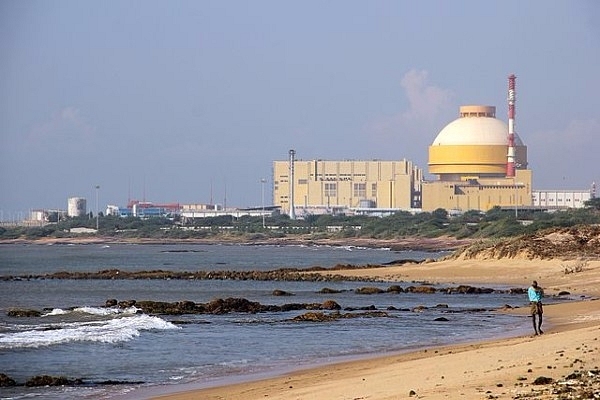Ideas
Kudankulam II Goes Critical: Why India Needs Hundreds More
- India received a 1,000 MW boost in electricity generation with the second unit of KKNPP achieving criticality.
- There is a need for hundreds of such reactors to keep pace with India’s increasing power needs.

Image Credit: indiawaterportal.org/The Kudankulam Nuclear Power Plant (KKNPP)/Wikimedia Commons
The second unit of the Kudankulam Nuclear Power Project (KKNPP) went critical, or started nuclear fission, on 28 August 2016, paving the way for a 1,000 MW increase in electricity generation, even as India needs hundreds of such reactors to satiate its power needs.
The unit will boost the country’s collective nuclear power generation capacity to 6,780 MW from the existing 5,780 MW. India operates 22 nuclear power reactors and the Nuclear Power Corporation of India (NPCIL) is planning to commission four more soon.
However, all this is just a drop in the ocean.
India currently generates a little more than 250 GW of electricity, and according to a study, it would require an electricity generating potential of 1,400 GW by 2060. An average Indian today consumes much less power (917 kWh a year) than his European counterpart (nearly 3,000 kWh a year). But when this gap is bridged by increasing incomes and overall economic development, power demand will naturally go up significantly.
Swarajya author Jaideep Prabhu, therefore, presents a case for hundreds of more such reactors:
The KKNPP achieved first criticality on 28 August, which is likely to be connected to the southern grid after it starts generating 400 MW of power within 45 days.
The 1,000 MW first unit attained criticality on 13 July 2013 and was synchronised with the grid in October the same year.
Introducing ElectionsHQ + 50 Ground Reports Project
The 2024 elections might seem easy to guess, but there are some important questions that shouldn't be missed.
Do freebies still sway voters? Do people prioritise infrastructure when voting? How will Punjab vote?
The answers to these questions provide great insights into where we, as a country, are headed in the years to come.
Swarajya is starting a project with an aim to do 50 solid ground stories and a smart commentary service on WhatsApp, a one-of-a-kind. We'd love your support during this election season.
Click below to contribute.
Latest